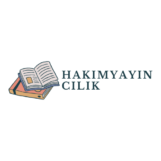I’ve spent years helping aspiring writers unlock their creative potential and I know that getting started with creative writing can feel overwhelming. Whether you dream of writing the next bestselling novel or simply want to express yourself through words the journey begins with understanding the basics.
Getting into creative writing for beginners doesn’t require fancy degrees or expensive workshops. All you need is passion dedication and the right guidance to transform your ideas into compelling stories. I’ll show you proven techniques that’ll help you develop your unique voice and craft engaging narratives that captivate readers. From mastering character development to building immersive worlds we’ll explore the essential elements that make creative writing both enjoyable and rewarding.
Key Takeaways
- Creative writing for beginners encompasses various forms including novels, short stories, poetry, screenplays, and personal essays, offering multiple avenues for self-expression.
- Essential elements of creative writing include character development, plot structure, and world-building, which work together to create engaging narratives.
- Establishing a dedicated writing space, consistent schedule, and achievable word count goals are crucial for developing a sustainable writing practice.
- “”Show, don’t tell”” technique, sensory details, and effective dialogue are fundamental skills that transform basic writing into compelling storytelling.
- Regular writing exercises like free writing and using prompts help overcome writer’s block and strengthen creative abilities.
- Building a diverse writing portfolio and getting feedback from critique groups are essential steps for growth and professional development.
Creative Writing for Beginners
Creative writing transforms imagination into written expression through original compositions that go beyond traditional professional, journalistic or academic forms. The craft emphasizes narrative craft, character development and the use of literary devices to engage readers emotionally.
Different Forms of Creative Writing
Creative writing encompasses multiple formats that allow writers to express their unique voices:
- Novels – Long-form fiction stories spanning 50,000+ words across multiple chapters
- Short Stories – Concise narratives typically ranging from 1,000 to 7,500 words
- Poetry – Artistic expression through verse, rhythm and imagery
- Screenplays – Scripts written specifically for film or television production
- Personal Essays – First-person reflective pieces based on life experiences
- Flash Fiction – Ultra-short stories under 1,000 words
- Children’s Literature – Age-appropriate stories with educational or entertainment value
- Memoirs – Autobiographical works focusing on specific life periods or themes
- Enhanced Communication – Strengthens ability to convey complex ideas clearly
- Critical Thinking – Improves analytical skills through plot development and character motivation
- Emotional Intelligence – Deepens understanding of human behavior through character creation
- Stress Relief – Provides healthy outlet for processing emotions and experiences
- Career Advancement – Opens opportunities in publishing, marketing and content creation
- Personal Growth – Builds confidence through self-expression and artistic development
- Language Mastery – Expands vocabulary and strengthens grammar skills
- Digital Literacy – Develops content creation abilities for online platforms and social media
Essential Elements of Creative Writing
Creative writing combines distinct components that work together to create compelling narratives. Here are the fundamental elements that transform basic storytelling into engaging literature.
Character Development
Characters serve as the emotional anchor in creative writing, driving the story through their actions and growth. Creating memorable characters involves:
- Establish clear motivations that explain why characters make specific choices
- Design distinct personality traits including quirks, habits and mannerisms
- Develop backstories that shape the character’s worldview and decisions
- Create consistent character arcs showing growth or change throughout the story
- Build relationships between characters that generate conflict or support
Plot Structure
Plot provides the framework that moves the story from beginning to end in a coherent way. Key aspects of plot structure include:
- Hook readers with an engaging inciting incident in the opening scenes
- Build rising action through progressive complications and obstacles
- Position plot points at strategic intervals to maintain narrative momentum
- Create a climax that brings the main conflict to a head
- Resolve story threads while leaving room for reflection
- Define specific time periods, locations and cultural contexts
- Establish rules, limitations and systems that govern the story world
- Include sensory details that make settings vivid and immersive
- Connect setting elements to plot events and character development
- Layer worldbuilding details naturally through action and dialogue
Getting Started With Creative Writing
Creative writing begins with establishing a solid foundation for consistent practice. The following elements create an optimal environment for developing your writing skills.
Finding Your Writing Space
A dedicated writing space enhances focus and productivity during creative sessions. I recommend selecting a quiet area with minimal distractions, adequate lighting for eye comfort, and ergonomic seating to maintain proper posture. Your writing space needs:
- A clean desk or table with sufficient surface area for writing tools
- Proper ventilation for fresh air circulation
- Access to power outlets for electronic devices
- Storage solutions for writing materials (notebooks, reference books)
- Personal touches that spark creativity (inspiring artwork, plants, mood lighting)
- Set specific writing hours (morning, afternoon, evening)
- Block 30-60 minute focused writing sessions
- Track daily word count goals (500-1000 words)
- Schedule regular breaks (5-10 minutes per hour)
- Create pre-writing rituals (meditation, reading, journaling)
| Time Investment | Word Count Goal | Break Duration |
|---|---|---|
| 30 minutes | 250-500 words | 5 minutes |
| 60 minutes | 500-1000 words | 10 minutes |
| 90 minutes | 750-1500 words | 15 minutes |
Fundamental Writing Techniques
Writing techniques form the foundation of compelling storytelling, transforming basic narratives into immersive experiences. Each technique serves as a building block for creating engaging content that resonates with readers.
Show Don’t Tell
Showing through action creates vivid mental images instead of simply stating facts. I demonstrate this technique through specific examples:
- Replace “”Sarah was angry”” with “”Sarah slammed the door, her hands trembling””
- Transform “”The room was cold”” to “”Frost crept up the windowpanes, and his breath formed clouds””
- Switch “”Tom felt nervous”” to “”Tom’s fingers drummed against the desk as sweat beaded on his forehead””
- Convert “”It was a beautiful day”” to “”Sunlight sparkled on dewdrops while birds swooped through cloudless skies””
Using Sensory Details
Sensory details engage readers through the five senses, creating memorable scenes:
- Sight: Colors, shapes, movements, sizes, textures
- Sound: Volume levels, rhythms, natural sounds, mechanical noises
- Touch: Temperatures, textures, pressure, weight
- Smell: Environmental scents, food aromas, personal fragrances
- Taste: Flavor combinations, intensity levels, texture connections
- Format each speaker’s words in a new paragraph
- Use dialogue tags sparingly (“”said”” works effectively)
- Include action beats to break up conversation
- Remove unnecessary greetings or small talk
- Maintain distinct voices for each character
- Add subtext through body language descriptions
- Keep conversations focused on story progression
Common Creative Writing Exercises
Creative writing exercises strengthen storytelling abilities through structured practice sessions. These exercises build confidence, develop creativity, and establish productive writing habits.
Free Writing
Free writing unleashes creativity by eliminating self-editing during the writing process. Here’s how to practice free writing effectively:
- Set a timer for 10-15 minutes
- Write continuously without stopping to edit or revise
- Ignore grammar, spelling, and punctuation rules
- Keep your hand moving across the page or fingers typing
- Follow your thoughts wherever they lead
- Focus on quantity over quality
- Resist the urge to read what you’ve written until time expires
Writing Prompts
Writing prompts provide specific starting points that spark imagination and overcome writer’s block. Here are effective ways to use writing prompts:
Single-Word Prompts
- Choose one word (e.g., mirror, whisper, shadow)
- Write for 20 minutes exploring multiple interpretations
- Create 3-5 different story beginnings from the same word
Scenario Prompts
- Begin with a specific situation (e.g., finding an unmarked package)
- Develop the story in unexpected directions
- Focus on character reactions and consequences
- Select a compelling photograph or artwork
- Describe the scene using sensory details
- Create a backstory for the elements in the image
- Write about what happens before or after the captured moment
Each exercise targets different aspects of creative writing while maintaining engagement through structured practice sessions.
Building Your Writing Portfolio
A writing portfolio showcases your best creative work to potential readers publishers or writing clients. It demonstrates your range versatility expertise.
Choosing Your Best Work
My portfolio selection focuses on pieces that demonstrate diverse writing skills across multiple genres formats. Here’s how I curate content effectively:
- Select 3-5 polished pieces that represent different writing styles (short stories personal essays flash fiction)
- Include samples with varied tones (humorous dramatic contemplative)
- Highlight pieces published in literary magazines blogs or writing contests
- Pick works that showcase character development dialogue world-building
- Choose pieces under 5000 words to maintain reader engagement
- Update selections every 6 months to display growth improvement
Getting Feedback
Professional feedback shapes refines improves portfolio pieces before presentation. I incorporate these feedback methods:
- Join 2-3 writing critique groups for diverse perspectives
- Submit work to beta readers from target audience demographics
- Request specific feedback on plot structure character arcs pacing
- Share drafts with published authors in similar genres
- Utilize online writing communities (Scribophile Critique Circle)
- Track common feedback patterns to identify areas for improvement
- Apply received feedback systematically starting with major plot issues
- Document revision history to showcase growth development
Each portfolio piece undergoes 3-4 rounds of feedback revision before final selection. Focus feedback requests on specific elements like dialogue tension pacing rather than general impressions.
Overcoming Writer’s Block
Writer’s block creates frustrating mental barriers that prevent creative flow and writing progress. Here’s how to break free from creative stagnation and restart the writing process.
Creative Inspiration Tips
I’ve found these proven techniques effective for sparking creativity:
- Browse writing prompts on platforms like Reddit r/WritingPrompts or Pinterest for story ideas
- Read diverse genres outside your comfort zone to discover fresh perspectives
- Create mood boards with images related to your story’s theme or setting
- Listen to instrumental music or ambient sounds that match your story’s tone
- Take focused walks in new environments to stimulate sensory observations
- Record interesting conversations or situations in a small notebook
- Study art galleries online to interpret visual stories through words
- Interview people with experiences similar to your characters
- Set a 25-minute timer for focused writing without self-editing
- Change your writing location to create new neural associations
- Write scenes out of sequence when stuck on a particular section
- Start in the middle of a scene to bypass opening paragraph pressure
- Use voice recording to capture ideas when writing feels overwhelming
- Break large writing tasks into 300-word mini-sessions
- Switch writing tools (computer to notebook or vice versa)
- Create character interviews to explore new story angles
- Establish a 15-minute pre-writing ritual to signal creative time
| Time Management Technique | Daily Word Goal | Break Duration |
|---|---|---|
| Pomodoro Method | 500 words | 5 minutes |
| Block Schedule | 1,000 words | 10 minutes |
| Sprint Writing | 750 words | 15 minutes |
Writing Journey
Starting your creative writing journey might seem daunting but I’ve seen countless creative writing for beginners transform into confident storytellers. The key is to embrace the process and remember that every writer starts somewhere.
I encourage you to take that first step today. Pick up your pen or open your laptop and let your creativity flow. Whether you dream of writing the next bestselling novel or simply want to express yourself through words your creative writing journey starts now.
Remember that becoming a skilled writer is a continuous learning experience. I’m confident that with dedication practice and the techniques I’ve shared you’ll develop your unique voice and create stories that captivate readers.

